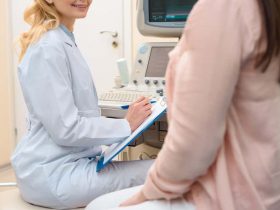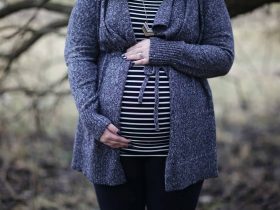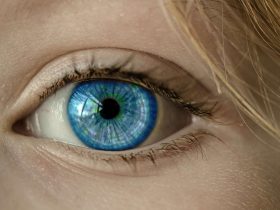During pregnancy, a woman undergoes significant anatomic and physiologic changes that result in a variety of symptoms affecting the lower extremity. A popular non-pharmacological intervention to help relieve leg issues is foot massage.
A massage is generally the act of systematic manipulation of the soft tissues of the body for purposes of alleviating pain, muscle relaxation or as alternative medicine (Sutham et al., 2020). It alleviates discomforts, including back pains, stiff neck, headaches, leg cramps, and edema.
In pregnancy, massaging is believed to reduce stress on weight bearing joints, encourage blood and lymphatic circulation, and help relax muscle tension. As a consequence of these benefits, it can also improve sleep, and reduce experiences of depression and anxiety that may be caused by hormonal changes in the pregnant woman (Shobeiri, 2017). The safety, however, of foot massage during pregnancy remains unclear.
Jesmarie Macapagal, RN, MD, DPPS
Foot Massage During Pregnancy: Efficacy Explained
Several studies have aimed to demonstrate the efficacy and safety of foot massage in a number of conditions affecting pregnant women in general. Following is a detailed discussion of their findings.
Leg/Foot Edema
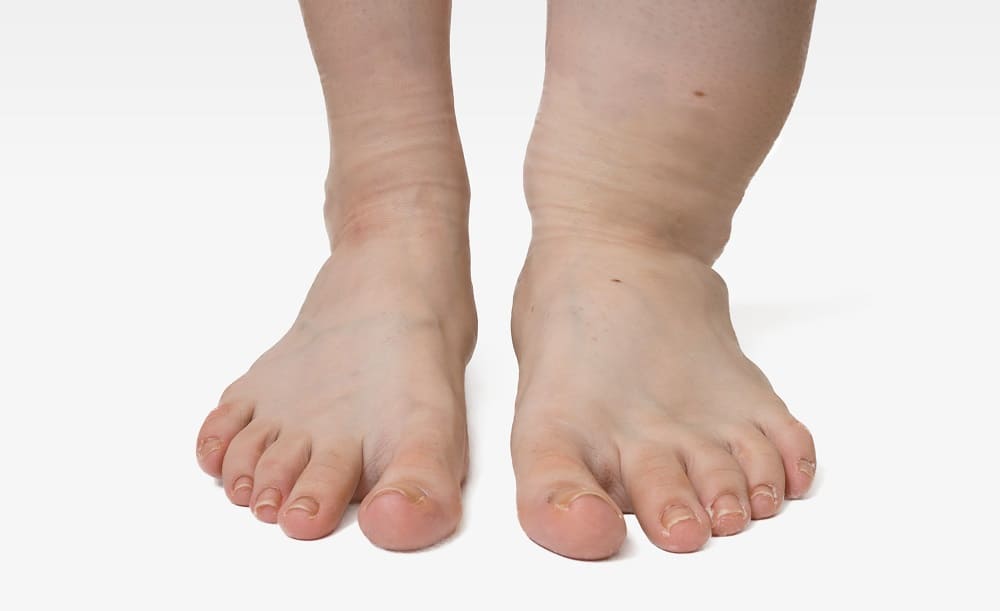
One of the most common and bothersome problems during pregnancy is physiological leg and foot edema. The increasing weight of the growing uterus puts pressure on the pelvic veins and on the inferior vena cava, leading to increased blood pressure in leg veins, venous insufficiency and edema. It affects as many as 80% of pregnant women and causes restrictions in their activity (Navaee & Rakhshkhorshid, 2020).
Foot massage can help alleviate leg and foot edema by moving extravascular fluid, increasing peripheral blood flow, and increasing oxygen uptake. Using oil during foot massage helps the hands of the masseur to move easily on skin surfaces; Oil also helps minimize dryness of the skin. Non-marital, single pregnant women may even consider a massage gun specifically designed for women.
A number of researches have been made to investigate the effects of foot massage on pregnancy-related physiological leg edema.
- In 2020, a study by Navaee & Rakhshkhorshid evaluated the effect of foot massage using grape seed oil and sweet almond oil on physiological leg edema. These oils, commonly used for therapeutic massage, are good sources of essential fatty acids and vitamin E, polyphenols, and flavonoids. They are also found to improve blood circulation, thereby causing some improvement in varicose veins, hemorrhoids, and limb edema. Sweet almond oil contains vitamin E and riboflavonoids that have antioxidant effect.
The clinical trial was conducted in Iran with 90 primigravid (women who are pregnant for the first time) mothers with gestational ages between 30 and 40 weeks. Foot circumferences were measured to determine the extent of leg edema and possible benefits of foot massage. Their results showed a significant decrease in leg edema among mothers in the intervention group, and confirmed the effectiveness of foot massage with use of grape seed and sweet almond oils to reduce physiological edema during pregnancy (Navaee & Rakhshkhorshid, 2020).
- A similar study by Rahimikian et al. (2015) was performed with the aim of determining the effect of foot massage on pregnant women’s physiological edema, this time, with the use of baby oil. One hundred twenty pregnant women with ages between 20 and 35 years participated in the study. The treatment group received 20 minutes of foot massage daily for 5 days, while the control group did not receive any massage.
Foot edema was then measured using a non-elastic measuring tape on the leg. Results of this study showed a statistically significant decrease in physiological edema with the treatment group compared to the control group. They therefore concluded that foot massage can be performed by trained midwives as an effective, low-cost method to alleviate physiological edema during pregnancy (Rahimikian et al., 2015).
- A comparable research by Coban & Sirin in 2010 investigated on the effect of foot massage for reducing physiological lower leg edema for women in late pregnancy. Eighty pregnant women from Turkey were randomly divided into two groups. One group was given 20 minutes of foot massage daily for 5 days, while the other group received no additional intervention beyond standard prenatal care.
The group that was given foot massage daily had a significantly smaller lower leg circumference compared to the control group. Again, their results demonstrated that foot massage has a positive effect on decreasing physiological lower leg edema during late pregnancy (Coban & Sirin, 2010).
- Another study using a different intervention, foot reflexology, was explored by Mollart in 2003. Fifty five women in their third trimester of pregnancy were evaluated via ankle and foot circumference to measure their leg edema. They were then divided into three groups and given the following: 1) relaxing foot reflexology, 2) lymphatic foot reflexology, or 3) rest period.
This time, results showed no statistically significant difference with post-therapy ankle and foot circumference measurements among the three groups. Therefore, foot reflexology techniques did not show any benefit for reducing leg edema in pregnancy (Mollart, 2003).
Fatigue
Being pregnant is an experience often coupled with a lot of stress, both physically and mentally. Fatigue can be a result of all this stress, and is especially common during the first and third trimesters of pregnancy. An increase in fatigue can lead to problems not only in the duration of the pregnancy, but during delivery and the postpartum period as well.
Foot reflexology has often been studied to decrease fatigue among pregnant women. It is a technique of applying pressure to certain areas on the sole of the feet. Reflexology is a relaxing and effective way to reduce fatigue and stress. It is a complementary, non-invasive and alternative treatment that has been recently researched due to its non-pharmacological nature of intervention (Shobeiri et al., 2017).
- In 2017, Shobeiri et al. investigated the effect of counselling and foot reflexology on fatigue among pregnant women in Iran. They stated that the reflexology theory is based on the principle that energy flows through vertical zones from the foot, across the body, and toward the head. They believed that reflexology is a healthy way to decrease stress and promote overall wellness during pregnancy.
The clinical trial was composed of three groups, consisting of forty two pregnant women each. Group A was provided with counselling and foot reflexology. Group B was provided foot reflexology alone. Group C received neither intervention. All participants answered a standard checklist to measure their fatigue severity prior to treatment interventions, then again after five sessions, which happened twice a week, to measure their fatigue post-intervention (Shobeiri et al., 2017).
In both groups A and B, fatigue severity after the intervention was significantly reduced. In addition, post-intervention fatigue was also significantly decreased with the experimental groups compared to the control group. Therefore, they concluded that counselling and foot reflexology are effective for diminishing the fatigue experienced by pregnant women (Shobeiri et al., 2017).
- Another study by Wang et al. (2008) reported on the efficacy of reflexology in various health conditions. They made a systematic review of different journals published from 1996 to 2007. They selected researches that used controlled clinical trials, used reflexology as an independent intervention, and reported outcomes of symptom relief, quality of life and patients’ perceptions.
After careful selection, the authors were able to gather five studies for their review. Among these, they found that only one report showed a statistically significant effect of treatment. Twelve outcome variables were examined, and only urinary symptoms that were associated with multiple sclerosis was found to gain benefit from reflexology. Effect size for other conditions was concluded negligible (Wang et al., 2008).
Anecdotal evidences have shown the possible benefits of reflexology in a number of conditions. However, this review demonstrated that there is no evidence for any beneficial effect of reflexology for any health condition, except for urinary complaints in multiple sclerosis. Hence, the use of reflexology routinely cannot be recommended (Wang et al., 2008).
Depression
Depression is a common problem, and affects 10 to 49 percent of women, during pregnancy. Pregnant women who are depressed are at increased risk of premature delivery. Their newborns are also at increased risk of having low birth weight (less than 2500 grams). In the United States, low birth weight is one of the leading causes of neonatal morbidity and mortality (Field et al., 2012).
A study by Field et al. published in 2012 investigated on the effects of yoga and massage therapy for depression during pregnancy, as well as neonatal outcomes. Eighty four pregnant women diagnosed to have depression were randomly assigned to three groups: 1) yoga, 2) massage therapy, or 3) standard prenatal care.
Twelve weeks of twice weekly interventions were given. A total of 20 minutes each for yoga and massage therapy was provided for each session. The massages were conducted by licensed therapists who massaged the pregnant women’s head, back, arms and legs, while lying on each side (Field et al., 2012).
Results showed that both yoga and massage groups had a significant reduction on depression, anxiety, and back and leg pain, compared to the control group. Neonatal outcomes revealed that women who received either yoga or massage therapy had significantly higher gestational ages and birth weights compared to those who received standard prenatal care alone. Neonatal outcomes between the yoga group and massage group were found to be statistically similar. Therefore, both interventions were found to be effective in reducing depression and improving newborn outcomes.
Is it Safe to Get a Foot Massage During Pregnancy?
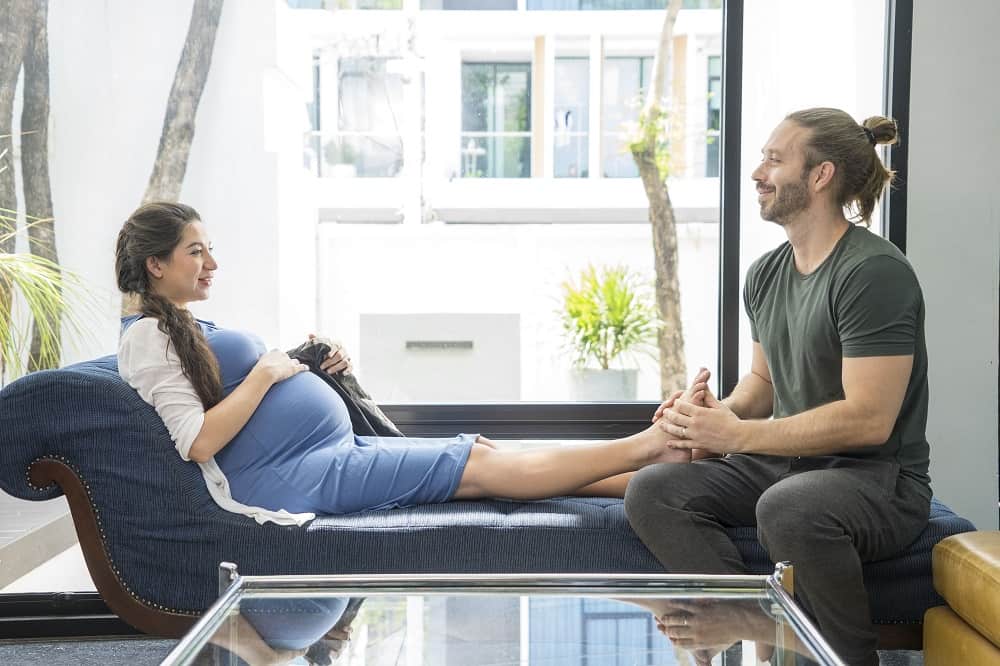
Although foot massage does seem to have positive effects for a pregnant mom, it is not entirely without risks. One study reported on a rare but fatal consequence of leg massage on a pregnant Thai woman.
Sutham et al. in 2020 explained that the traditional Thai massage is a form of therapy that involves yoga-like movements, stretching, and application of direct pressure to the muscles. Sessions usually last 1-2 hours. It is a widely accepted, and increasingly popular, relaxation technique and alternative medicine in Thailand.
The case reported was that of a 25-year-old primigravid woman at her 25th week age of gestation, who underwent massage at a traditional massage shop in Thailand. Approximately just 5-10 minutes after leg and foot massage, the woman suddenly developed difficulty of breathing, followed by loss of consciousness, spastic convulsion, and finally cardiac arrest (Sutham et al., 2020).
Two nurses, who were incidentally at the scene, provided first aid resuscitation. Within 20 minutes, the emergency medical service arrived and found the patient to have no pulse. They performed basic life support (BLS), endotracheal intubation and continuous cardiopulmonary resuscitation (CPR), at the scene and while in transit to the hospital. They arrived at the hospital 25 minutes after, where advanced cardiovascular life support (ACLS) was provided, successfully resuscitating the patient. However, she remained in a state of coma (Sutham et al., 2020).
Medical investigations on the patient revealed massive pulmonary embolism and deep vein thrombosis on both legs. Maternal hypoxia led to decreased perfusion in the placenta and fetal distress. Within 8 hours of fetal distress, the fetus died in utero, and spontaneous labor and vaginal delivery occurred. Two months after the incident, the patient remained to be unconscious (Sutham et al., 2020).
Although rare, foot and leg massage may have serious adverse effects in pregnancy. The act of foot massage in women with deep vein thrombosis can dislodge the thrombi (blood clot), which may lead to life threatening pulmonary embolism. Pregnant women are in a physiologic hypercoagulable state and, therefore, are at a higher risk of developing this fatal condition. Likewise, it is important to note that not only the life of the mother, but the fetus as well, was affected (Sutham et al., 2020).
Final Thoughts
Foot massaging was shown in several studies to have conflicting results regarding its benefits in pregnancy. Additionally, there are serious risks involved and its safety for use among pregnant women has not been cleared. Pregnant women, as well as professional massage providers, should be aware of possible existing conditions like deep vein thrombosis, and prevent foot massaging from initiating life-threatening course of events. Remember that it is always wise to err on the side of caution.
References
- Coban, A., & Sirin, A. (2010). Effect of foot massage to decrease physiological lower leg oedema in late pregnancy: A randomized controlled trial in Turkey. International Journal of Nursing Practice 16(5), 454-460. doi: 10.1111/j.1440-172X.2010.01869.x
- Field, T., Diego, M., Medina, L., Delgado, J., & Hernandez, A. (2012). Yoga and massage therapy reduce prenatal depression and prematurity. Journal of Bodywork and Movement Therapies 16(2), 204-209. doi: 10.1016/j.jbmt.2011.08.002
- Mollart, L. (2003). Single-blind trial addressing the differential effects of two reflexology techniques versus rest, on ankle and foot oedema in late pregnancy. Complementary Therapies in Nursing & Midwifery 9(4), 203-208. doi: 10.1016/S1353-6117(03)00054-4
- Navaee, M., & Rakhshkhorshid, M. (2020). Comparing the effect of foot massage with grape seed oil and sweet almond oil on physiological leg edema in primigravidae: A randomized clinical trial. Evidence-Based Complementary and Alternative Medicine. doi: 10.1155/2020/6835814
- Rahimikian, F., Shadmehr, A., Mehran, A., & Kiani, M. (2015). Effect of foot massage on physiological edema during pregnancy. Journal of Knowledge & Health 9(4), 1-7.
- Shobeiri, F., Manoucheri, B., Parsa, P., & Roshanaei, G. (2017). Effects of counselling and sole reflexology on fatigue in pregnant women: A randomized clinical trial. Journal of Cllinical & Diagnostic Research 11(6), QC01-QC04. doi: 10.7860/JCDR/2017/22681.9972
- Sutham, K., Na-Nan, S., Paiboonsithiwong, S., Chaksuwat, P., & Tongsong, T. (2020). Leg massage during pregnancy with unrecognized deep vein thrombosis could be life threatening: A case report. BMC Pregnancy and Childbirth 20, 237. doi: 10.1186/s12884-020-02924-w
- Wang, M., Tsai, P., Lee, P., Chang, W., & Yang, C. (2008). The efficacy of reflexology: Systematic review. Journal of Advanced Nursing 62(5), 512-520. doi: 10.1111/j.1365-2648.2008.04606.x

